Lewes Castle stands at the highest point of Lewes, East Sussex, England on an artificial mound constructed  with chalk blocks. It was originally called Bray Castle.
with chalk blocks. It was originally called Bray Castle. The first fortification on the site was a wooden keep, later converted to stone. It is unusual for a motte and bailey
The first fortification on the site was a wooden keep, later converted to stone. It is unusual for a motte and bailey  construction in that it has two mottes. It is one of only two such remaining in the country, the other being Lincoln. The Barbican
construction in that it has two mottes. It is one of only two such remaining in the country, the other being Lincoln. The Barbican is a particularly fine example of its type.
is a particularly fine example of its type.

 with chalk blocks. It was originally called Bray Castle.
with chalk blocks. It was originally called Bray Castle. The first fortification on the site was a wooden keep, later converted to stone. It is unusual for a motte and bailey
The first fortification on the site was a wooden keep, later converted to stone. It is unusual for a motte and bailey  is a particularly fine example of its type.
is a particularly fine example of its type.
It was built in 1069 by William de Warenne, 1st Earl of Surrey, the brother-in-Law of William the Conqueror. William de Warenne and his descendants also had estates and built castles in Reigate, Surrey (Reigate Castle)
the brother-in-Law of William the Conqueror. William de Warenne and his descendants also had estates and built castles in Reigate, Surrey (Reigate Castle)  and in Yorkshire (Sandal Castle
and in Yorkshire (Sandal Castle  and Conisbrough Castle).
and Conisbrough Castle).  When the last of the Warennes John, the 7th Earl died without issue in 1347, he was buried in Lewes Priory. the last Warenne earl of Surrey.
When the last of the Warennes John, the 7th Earl died without issue in 1347, he was buried in Lewes Priory. the last Warenne earl of Surrey.
 the brother-in-Law of William the Conqueror. William de Warenne and his descendants also had estates and built castles in Reigate, Surrey (Reigate Castle)
the brother-in-Law of William the Conqueror. William de Warenne and his descendants also had estates and built castles in Reigate, Surrey (Reigate Castle)  and in Yorkshire (Sandal Castle
and in Yorkshire (Sandal Castle  and Conisbrough Castle).
and Conisbrough Castle).  When the last of the Warennes John, the 7th Earl died without issue in 1347, he was buried in Lewes Priory. the last Warenne earl of Surrey.
When the last of the Warennes John, the 7th Earl died without issue in 1347, he was buried in Lewes Priory. the last Warenne earl of Surrey.
He was the son of William de Warenne, the only son of John de Warenne, 6th Earl of Surrey. His mother was Joan, daughter of Robert de Vere, 5th Earl of Oxford.

Warenne was only six months old when his father died, and was 8 years old when his mother died. He succeeded his grandfather as earl when he was 19.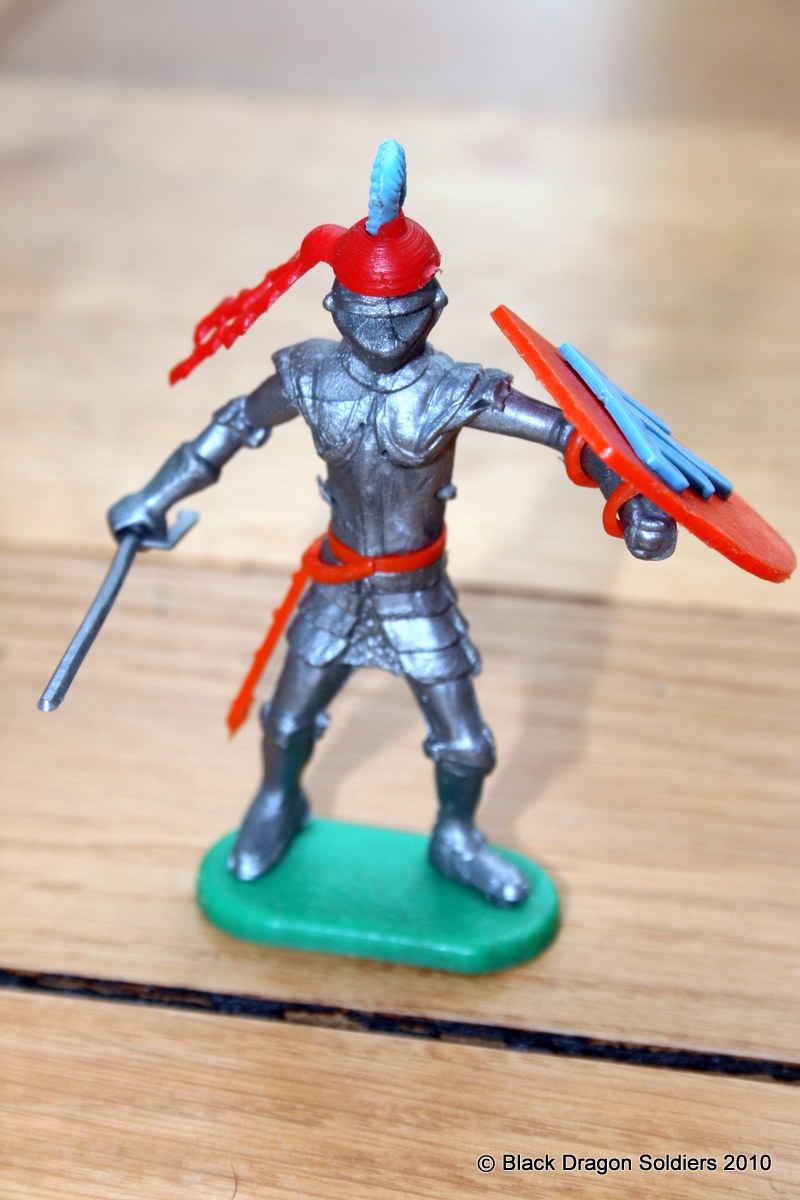

He was one of the great nobles offended by the rise of Edward II's favorite Piers Gaveston, and helped secure Gaveston's 1308 banishment. 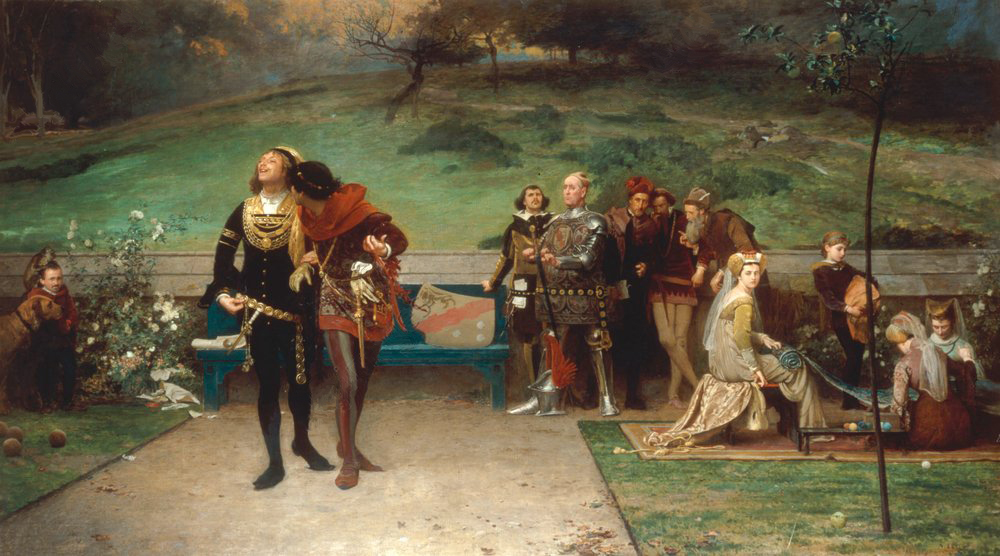 The two were somewhat reconciled after Gaveston's return the next year, but in 1311 Warenne was one of the nobles who captured Gaveston. He was however unhappy about Gaveston's execution at the behest of the earl of Warwick, which pushed him back into the king's camp.It was alleged by medieval chroniclers that Edward II and Piers Gaveston were lovers, a rumour that was reinforced by later portrayals in fiction, such as Christopher
The two were somewhat reconciled after Gaveston's return the next year, but in 1311 Warenne was one of the nobles who captured Gaveston. He was however unhappy about Gaveston's execution at the behest of the earl of Warwick, which pushed him back into the king's camp.It was alleged by medieval chroniclers that Edward II and Piers Gaveston were lovers, a rumour that was reinforced by later portrayals in fiction, such as Christopher  Marlowe's play Edward II. This assertion has received the support of some modern historians, while others have questioned it. According to Pierre Chaplais, the relationship between the two was that of an adoptive brotherhood, and Gaveston served as an unofficial deputy for a reluctant king. Other historians, like J.S. Hamilton, have pointed out that concern over the two men's sexuality was not at the core of the nobility's grievances, which rather centred on Gaveston's exclusive access to royal patronage
Marlowe's play Edward II. This assertion has received the support of some modern historians, while others have questioned it. According to Pierre Chaplais, the relationship between the two was that of an adoptive brotherhood, and Gaveston served as an unofficial deputy for a reluctant king. Other historians, like J.S. Hamilton, have pointed out that concern over the two men's sexuality was not at the core of the nobility's grievances, which rather centred on Gaveston's exclusive access to royal patronage
 The two were somewhat reconciled after Gaveston's return the next year, but in 1311 Warenne was one of the nobles who captured Gaveston. He was however unhappy about Gaveston's execution at the behest of the earl of Warwick, which pushed him back into the king's camp.It was alleged by medieval chroniclers that Edward II and Piers Gaveston were lovers, a rumour that was reinforced by later portrayals in fiction, such as Christopher
The two were somewhat reconciled after Gaveston's return the next year, but in 1311 Warenne was one of the nobles who captured Gaveston. He was however unhappy about Gaveston's execution at the behest of the earl of Warwick, which pushed him back into the king's camp.It was alleged by medieval chroniclers that Edward II and Piers Gaveston were lovers, a rumour that was reinforced by later portrayals in fiction, such as Christopher  Marlowe's play Edward II. This assertion has received the support of some modern historians, while others have questioned it. According to Pierre Chaplais, the relationship between the two was that of an adoptive brotherhood, and Gaveston served as an unofficial deputy for a reluctant king. Other historians, like J.S. Hamilton, have pointed out that concern over the two men's sexuality was not at the core of the nobility's grievances, which rather centred on Gaveston's exclusive access to royal patronage
Marlowe's play Edward II. This assertion has received the support of some modern historians, while others have questioned it. According to Pierre Chaplais, the relationship between the two was that of an adoptive brotherhood, and Gaveston served as an unofficial deputy for a reluctant king. Other historians, like J.S. Hamilton, have pointed out that concern over the two men's sexuality was not at the core of the nobility's grievances, which rather centred on Gaveston's exclusive access to royal patronage
The baronial opposition was led by the king's cousin Thomas, Earl of Lancaster, and he and Warenne became bitter enemies. Private war erupted between the two, and over the new few years Warenne lost a good part of his estates to Lancaster. He despised the royal favourite, Piers Gaveston, who mocked him as "the Fiddler", and swore revenge when Gaveston demanded that the King dismiss one of Lancaster's retainers.

Warenne was one of the four earls who captured the two Roger Mortimers, and in 1322 he was one of the nobles who condemned to death the earl of Lancaster.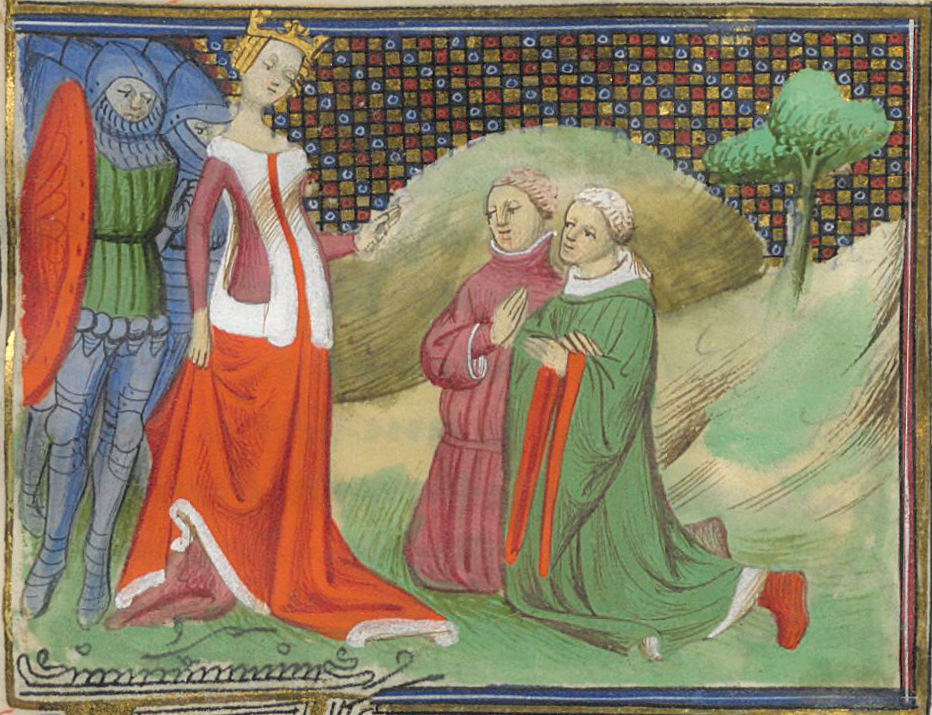

Warenne and his brother-in-law Edmund Fitzalan, 9th Earl of Arundel were the last two earls to remain loyal to Edward II after the rise to power of Queen Isabella and Roger Mortimer. After Arundel's execution he went over to the queen's side, urging Edward II's abdication in 1327.
He was the guardian of his cousin Edward Balliol, and after Balliol lay claim to the Scottish throne, accompanied him on his campaign in Lothian. Balliol created Warenne earl of Strathern, but this was in name only for the properties of the earldom were held by another
Balliol created Warenne earl of Strathern, but this was in name only for the properties of the earldom were held by another  claimant.If the king and Gaveston were indeed lovers, the question remains of what effect this had on their
claimant.If the king and Gaveston were indeed lovers, the question remains of what effect this had on their  respective careers and eventual downfalls. John Boswell, in his Christianity, Social Tolerance, and Homosexuality,
respective careers and eventual downfalls. John Boswell, in his Christianity, Social Tolerance, and Homosexuality, calls Gaveston Edward's lover,
calls Gaveston Edward's lover,  and writes that there is little doubt "that [Edward's] wife and the barons of England were violently hostile to
and writes that there is little doubt "that [Edward's] wife and the barons of England were violently hostile to 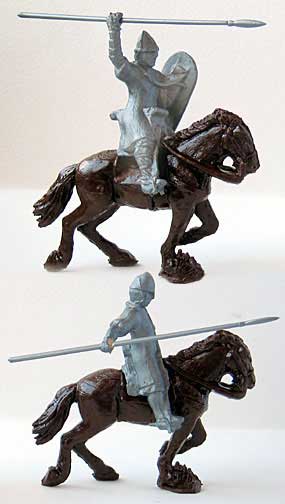 Edward's sexual proclivities, although he more than fulfilled his royal duties by fathering four children with Isabella." Boswell argues that Edward and Gaveston fell victim to a new-found concern about sexual morals among the
Edward's sexual proclivities, although he more than fulfilled his royal duties by fathering four children with Isabella." Boswell argues that Edward and Gaveston fell victim to a new-found concern about sexual morals among the secular powers of Western Europe, manifested shortly before in the trial of the Knights Templar in 1307. This interpretation is
secular powers of Western Europe, manifested shortly before in the trial of the Knights Templar in 1307. This interpretation is  disputed by Hamilton. "The favorite was murdered because of his control of patronage," writes Hamilton, "not because of his access to the king's bedchamber".This same view is also expressed by Roy Martin Haines, in his 2003 biography of the king.
disputed by Hamilton. "The favorite was murdered because of his control of patronage," writes Hamilton, "not because of his access to the king's bedchamber".This same view is also expressed by Roy Martin Haines, in his 2003 biography of the king.
 Balliol created Warenne earl of Strathern, but this was in name only for the properties of the earldom were held by another
Balliol created Warenne earl of Strathern, but this was in name only for the properties of the earldom were held by another  claimant.If the king and Gaveston were indeed lovers, the question remains of what effect this had on their
claimant.If the king and Gaveston were indeed lovers, the question remains of what effect this had on their  respective careers and eventual downfalls. John Boswell, in his Christianity, Social Tolerance, and Homosexuality,
respective careers and eventual downfalls. John Boswell, in his Christianity, Social Tolerance, and Homosexuality, calls Gaveston Edward's lover,
calls Gaveston Edward's lover,  and writes that there is little doubt "that [Edward's] wife and the barons of England were violently hostile to
and writes that there is little doubt "that [Edward's] wife and the barons of England were violently hostile to  Edward's sexual proclivities, although he more than fulfilled his royal duties by fathering four children with Isabella." Boswell argues that Edward and Gaveston fell victim to a new-found concern about sexual morals among the
Edward's sexual proclivities, although he more than fulfilled his royal duties by fathering four children with Isabella." Boswell argues that Edward and Gaveston fell victim to a new-found concern about sexual morals among the secular powers of Western Europe, manifested shortly before in the trial of the Knights Templar in 1307. This interpretation is
secular powers of Western Europe, manifested shortly before in the trial of the Knights Templar in 1307. This interpretation is  disputed by Hamilton. "The favorite was murdered because of his control of patronage," writes Hamilton, "not because of his access to the king's bedchamber".This same view is also expressed by Roy Martin Haines, in his 2003 biography of the king.
disputed by Hamilton. "The favorite was murdered because of his control of patronage," writes Hamilton, "not because of his access to the king's bedchamber".This same view is also expressed by Roy Martin Haines, in his 2003 biography of the king.
Warenne died in 1347 and is buried at the monastery of Lewes. He was succeeded as earl by his nephew Richard Fitzalan, who was also earl of Arundel.His title passed to his nephew Richard Fitzalan
In 1340 he fought at the Battle of Sluys, and then at the siege of Tournai
and then at the siege of Tournai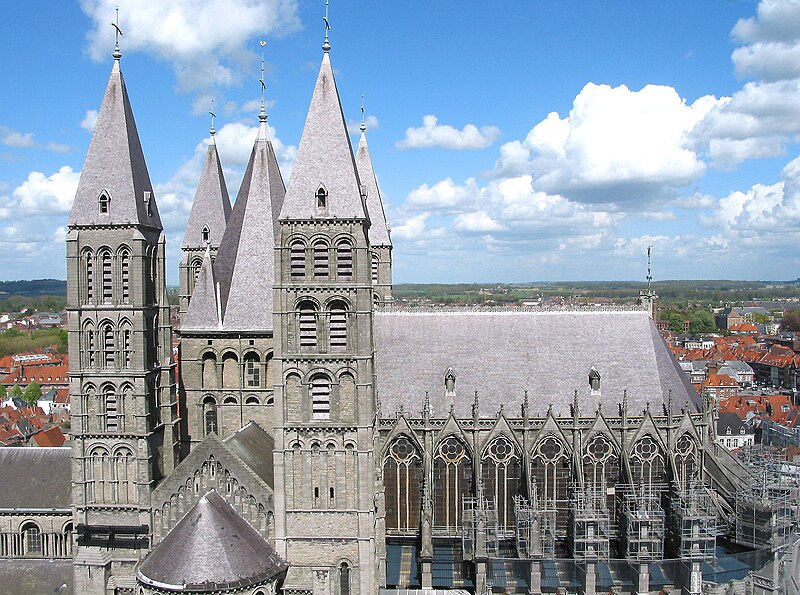 . After a short term as Warden of the Scottish Marches, he returned to the
. After a short term as Warden of the Scottish Marches, he returned to the  continent, where he fought in a number of campaigns, and was appointed Joint Lieutenant of Aquitaine
continent, where he fought in a number of campaigns, and was appointed Joint Lieutenant of Aquitaine in 1340.
in 1340.
Arundel was one of the three principal English commanders at the Battle of Crécy. He spent much of the following years on various military campaigns and diplomatic missions
He spent much of the following years on various military campaigns and diplomatic missions who was also Earl of ArundelThe castle has been
who was also Earl of ArundelThe castle has been owned by Sussex Past, an operational name for the Sussex Archaeological Society, since 1846.
owned by Sussex Past, an operational name for the Sussex Archaeological Society, since 1846. Tickets are sold from Barbican House which is just opposite the entrance gate, and include access to the Barbican House Museum of Sussex archaeology and the Town Model, both located there.
Tickets are sold from Barbican House which is just opposite the entrance gate, and include access to the Barbican House Museum of Sussex archaeology and the Town Model, both located there.
Barbican House also has a gift shop, bookshop and library for members of the archaeological society. Various events take place at the castle, including two plays annually, children's parties and weddings. It is a prominent
events take place at the castle, including two plays annually, children's parties and weddings. It is a prominent  feature of the town, situated close to the High Street and visible from much of the surrounding residential
feature of the town, situated close to the High Street and visible from much of the surrounding residential  areas.You can also visit Peter Coles workshop just up the road as the shop told me he likes visitors to his plastic soldier workshop.
areas.You can also visit Peter Coles workshop just up the road as the shop told me he likes visitors to his plastic soldier workshop.
In 1340 he fought at the Battle of Sluys,
 and then at the siege of Tournai
and then at the siege of Tournai . After a short term as Warden of the Scottish Marches, he returned to the
. After a short term as Warden of the Scottish Marches, he returned to the  continent, where he fought in a number of campaigns, and was appointed Joint Lieutenant of Aquitaine
continent, where he fought in a number of campaigns, and was appointed Joint Lieutenant of Aquitaine in 1340.
in 1340.Arundel was one of the three principal English commanders at the Battle of Crécy.
 He spent much of the following years on various military campaigns and diplomatic missions
He spent much of the following years on various military campaigns and diplomatic missions who was also Earl of ArundelThe castle has been
who was also Earl of ArundelThe castle has been owned by Sussex Past, an operational name for the Sussex Archaeological Society, since 1846.
owned by Sussex Past, an operational name for the Sussex Archaeological Society, since 1846. Tickets are sold from Barbican House which is just opposite the entrance gate, and include access to the Barbican House Museum of Sussex archaeology and the Town Model, both located there.
Tickets are sold from Barbican House which is just opposite the entrance gate, and include access to the Barbican House Museum of Sussex archaeology and the Town Model, both located there.
Barbican House also has a gift shop, bookshop and library for members of the archaeological society. Various
 events take place at the castle, including two plays annually, children's parties and weddings. It is a prominent
events take place at the castle, including two plays annually, children's parties and weddings. It is a prominent  feature of the town, situated close to the High Street and visible from much of the surrounding residential
feature of the town, situated close to the High Street and visible from much of the surrounding residential  areas.You can also visit Peter Coles workshop just up the road as the shop told me he likes visitors to his plastic soldier workshop.
areas.You can also visit Peter Coles workshop just up the road as the shop told me he likes visitors to his plastic soldier workshop.
The castle is currently open to visitors. Simon V de Montfort was named so as to distinguish him from other Simon de Montforts, he was an Anglo-Norman
Simon V de Montfort was named so as to distinguish him from other Simon de Montforts, he was an Anglo-Norman  nobleman. He led the barons' rebellion against King Henry III of England during the Second Barons' War of 1263-4
nobleman. He led the barons' rebellion against King Henry III of England during the Second Barons' War of 1263-4
 Simon V de Montfort was named so as to distinguish him from other Simon de Montforts, he was an Anglo-Norman
Simon V de Montfort was named so as to distinguish him from other Simon de Montforts, he was an Anglo-Norman 
The reign of Henry III is most remembered for the constitutional crisis in this period of civil strife, which was 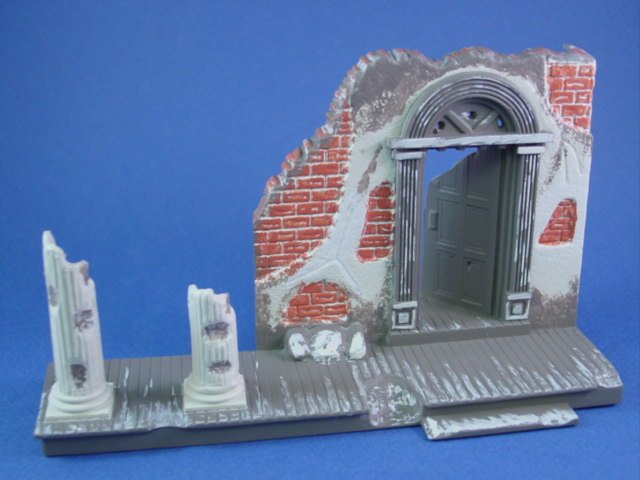 provoked ostensibly by Henry III's demands for extra finances, but which marked a more general dissatisfaction with Henry's methods of government on the part of the English barons, discontent which was exacerbated at a more popular level by widespread famine.
provoked ostensibly by Henry III's demands for extra finances, but which marked a more general dissatisfaction with Henry's methods of government on the part of the English barons, discontent which was exacerbated at a more popular level by widespread famine.
 provoked ostensibly by Henry III's demands for extra finances, but which marked a more general dissatisfaction with Henry's methods of government on the part of the English barons, discontent which was exacerbated at a more popular level by widespread famine.
provoked ostensibly by Henry III's demands for extra finances, but which marked a more general dissatisfaction with Henry's methods of government on the part of the English barons, discontent which was exacerbated at a more popular level by widespread famine.
French-born Simon de Montfort had originally been one of the foreign upstarts so loathed by many lords as Henry's foreign councillors, but having inherited through his mother the English title Earl of Leicester, he married Henry’s sister Eleanor without consulting Henry: a feud developed between the two. Their relationship reached a crisis in the 1250s, when de Montfort was put on trial for actions he took as lieutenant of Gascony,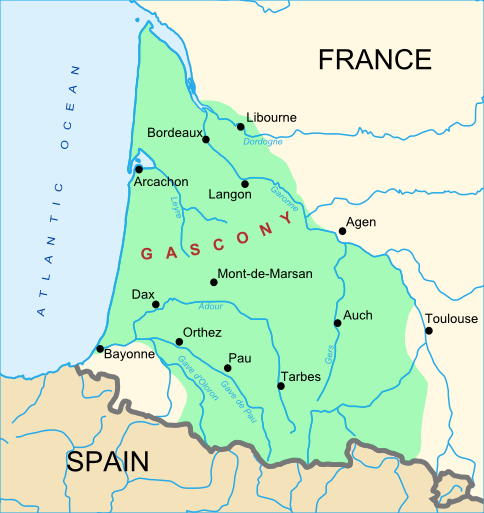 the last remaining Plantagenet lands across the English Channel.
the last remaining Plantagenet lands across the English Channel.
 the last remaining Plantagenet lands across the English Channel.
the last remaining Plantagenet lands across the English Channel.
Henry also became embroiled in funding a war against the Hohenstaufen , this was a dynasty of German kings in the High Middle Ages, lasting from 1138 to 1254. Three of these kings were also crowned Holy Roman Emperor. In 1194 the Hohenstaufens also became Kings of Sicily.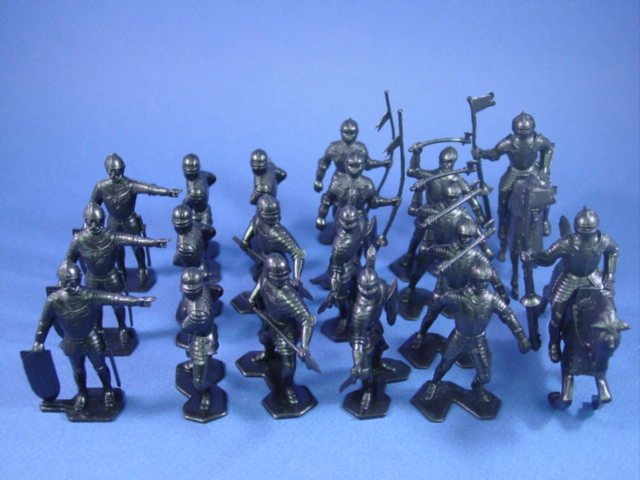 Hohenstaufen or Staufen, the adjective and plural of Staufer, is also the name of their castle in Swabia, located on an eponymous mountain near Göppingen,
Hohenstaufen or Staufen, the adjective and plural of Staufer, is also the name of their castle in Swabia, located on an eponymous mountain near Göppingen, built by the first known member of the dynasty, Duke Frederick I. The dynasty is sometimes called Swabian dynasty after the family's ducal origin.in Sicily on behalf of Pope Innocent IV
built by the first known member of the dynasty, Duke Frederick I. The dynasty is sometimes called Swabian dynasty after the family's ducal origin.in Sicily on behalf of Pope Innocent IV 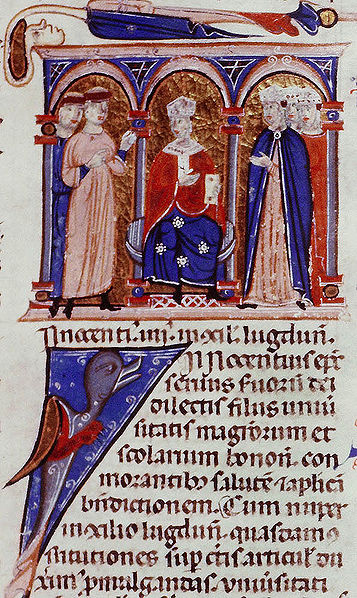 in return for the Hohenstaufen title King of Sicily for his second sonEdmund, duly invested 14 May 1254, a state of affairs which made many barons fearful that Henry was following in the footsteps of his father King John and, like him, needed to be kept in check. When Henry's treasury ran dry, Innocent withdrew the title, and in regranting it to Charles of Anjou in effect negated the sale.
in return for the Hohenstaufen title King of Sicily for his second sonEdmund, duly invested 14 May 1254, a state of affairs which made many barons fearful that Henry was following in the footsteps of his father King John and, like him, needed to be kept in check. When Henry's treasury ran dry, Innocent withdrew the title, and in regranting it to Charles of Anjou in effect negated the sale.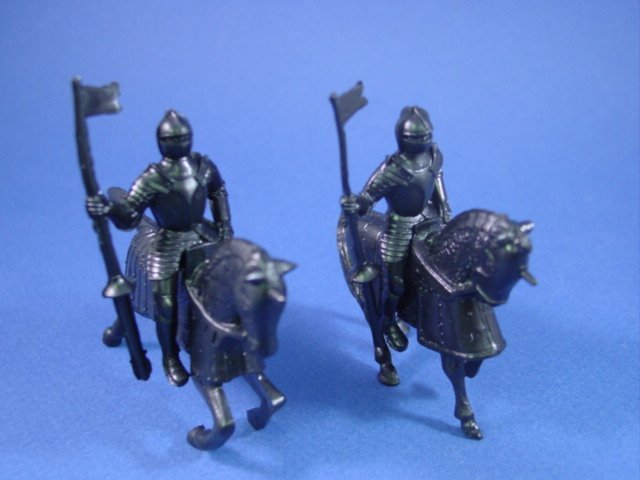
 Hohenstaufen or Staufen, the adjective and plural of Staufer, is also the name of their castle in Swabia, located on an eponymous mountain near Göppingen,
Hohenstaufen or Staufen, the adjective and plural of Staufer, is also the name of their castle in Swabia, located on an eponymous mountain near Göppingen, built by the first known member of the dynasty, Duke Frederick I. The dynasty is sometimes called Swabian dynasty after the family's ducal origin.in Sicily on behalf of Pope Innocent IV
built by the first known member of the dynasty, Duke Frederick I. The dynasty is sometimes called Swabian dynasty after the family's ducal origin.in Sicily on behalf of Pope Innocent IV  in return for the Hohenstaufen title King of Sicily for his second sonEdmund, duly invested 14 May 1254, a state of affairs which made many barons fearful that Henry was following in the footsteps of his father King John and, like him, needed to be kept in check. When Henry's treasury ran dry, Innocent withdrew the title, and in regranting it to Charles of Anjou in effect negated the sale.
in return for the Hohenstaufen title King of Sicily for his second sonEdmund, duly invested 14 May 1254, a state of affairs which made many barons fearful that Henry was following in the footsteps of his father King John and, like him, needed to be kept in check. When Henry's treasury ran dry, Innocent withdrew the title, and in regranting it to Charles of Anjou in effect negated the sale.
Simon, earl of Leicester, became leader of those who wanted to reassert the Magna Carta and force the king to surrender more power to the baronial council. In 1258, initiating the move toward reform, seven leading barons forced Henry to agree to the Provisions of Oxford, which effectively abolished the absolutist Anglo-Norman monarchy, giving power to a council of twenty-four barons to deal with the business of government and providing for a great council in the form of a parliament every three years, to monitor their performance.
Henry was forced to take part in the swearing of a collective oath to uphold the Provisions of Oxford. In the following years, those supporting de Montfort, including his circle of Franciscanadvisors centered on Adam Marsh,and those loyal to the king grew more and more polarised; Henry obtained a papal bull in 1261 exempting him from his oath, and both sides began to raise armies, the Royalists under Edward Longshanks, Henry's eldest son. A civil war followed. , and subsequently became de facto ruler of England. During his rule, de Montfort called the first directly elected parliament in medieval Europe. For this reason, de Montfort is regarded today as one of the progenitors of modern parliamentary democracy.
, and subsequently became de facto ruler of England. During his rule, de Montfort called the first directly elected parliament in medieval Europe. For this reason, de Montfort is regarded today as one of the progenitors of modern parliamentary democracy. .jpg) After a rule of just over a year, de Montfort was killed by forces loyal to the king in the Battle of Evesham.
After a rule of just over a year, de Montfort was killed by forces loyal to the king in the Battle of Evesham. In January 1238, de Montfort married Eleanor of England, daughter of King John and Isabella of Angoulême and sister of King Henry III. While this marriage took place with the king's approval, the act itself was performed secretly and without consulting the great barons, as a marriage of such importance warranted. Eleanor had previously been married to William Marshal, 2nd Earl of Pembroke, and she swore a vow of perpetual chastity upon his death, when she was sixteen, which she broke by marrying de Montfort.
In January 1238, de Montfort married Eleanor of England, daughter of King John and Isabella of Angoulême and sister of King Henry III. While this marriage took place with the king's approval, the act itself was performed secretly and without consulting the great barons, as a marriage of such importance warranted. Eleanor had previously been married to William Marshal, 2nd Earl of Pembroke, and she swore a vow of perpetual chastity upon his death, when she was sixteen, which she broke by marrying de Montfort.
 , and subsequently became de facto ruler of England. During his rule, de Montfort called the first directly elected parliament in medieval Europe. For this reason, de Montfort is regarded today as one of the progenitors of modern parliamentary democracy.
, and subsequently became de facto ruler of England. During his rule, de Montfort called the first directly elected parliament in medieval Europe. For this reason, de Montfort is regarded today as one of the progenitors of modern parliamentary democracy. .jpg) After a rule of just over a year, de Montfort was killed by forces loyal to the king in the Battle of Evesham.
After a rule of just over a year, de Montfort was killed by forces loyal to the king in the Battle of Evesham. In January 1238, de Montfort married Eleanor of England, daughter of King John and Isabella of Angoulême and sister of King Henry III. While this marriage took place with the king's approval, the act itself was performed secretly and without consulting the great barons, as a marriage of such importance warranted. Eleanor had previously been married to William Marshal, 2nd Earl of Pembroke, and she swore a vow of perpetual chastity upon his death, when she was sixteen, which she broke by marrying de Montfort.
In January 1238, de Montfort married Eleanor of England, daughter of King John and Isabella of Angoulême and sister of King Henry III. While this marriage took place with the king's approval, the act itself was performed secretly and without consulting the great barons, as a marriage of such importance warranted. Eleanor had previously been married to William Marshal, 2nd Earl of Pembroke, and she swore a vow of perpetual chastity upon his death, when she was sixteen, which she broke by marrying de Montfort.
The Archbishop of Canterbury, Edmund Rich, condemned the marriage for this reason. The English nobles protested the marriage of the King's sister to a foreigner of modest rank; most notably, Eleanor's brother Richard, 1st Earl of Cornwall rose up in revolt when he learned of the marriage. King Henry eventually bought off Richard with 6,000 marks and peace was restored.

The marriage brought the manor of Sutton Valence in Kent into de Montfort's possession.

Relations between King Henry and de Montfort were cordial at first. Henry lent him his support when de Montfort embarked for Rome in March 1238 to seek papal approval for his. Lewes is a must visit, go see Peter Coles replicant workshop and his soldiers plus some great pubs, below are a few.  marriage. When Simon and Eleanor's first son was born in November 1238 (despite rumours, more than nine months after the wedding), he was baptised Henry in honour of his Royal uncle. In February 1239, de Montfort was finally invested with the Earldom of Leicester. He
marriage. When Simon and Eleanor's first son was born in November 1238 (despite rumours, more than nine months after the wedding), he was baptised Henry in honour of his Royal uncle. In February 1239, de Montfort was finally invested with the Earldom of Leicester. He also acted as the King's counsellor and was one of the nine godfathers of Henry's eldest son, Prince Edward who would
also acted as the King's counsellor and was one of the nine godfathers of Henry's eldest son, Prince Edward who would inherit the throne and become longshanks as seeen in brave heart film
inherit the throne and become longshanks as seeen in brave heart film The Battle of Lewes was one of two main battles of the conflict known as the Second Barons' War.The reign of Henry III is most remembered for the constitutional crisis in this period of civil strife, which was provoked ostensibly by Henry III's demands for extra finances, but Relations between King Henry and de Montfort were cordial at first. Henry lent him his support when de Montfort embarked for Rome in March 1238 to seek papal approval for his. Lewes is a must visit, go see Peter Coles replicant workshop and his soldiers plus some great pubs, below are a few.
The Battle of Lewes was one of two main battles of the conflict known as the Second Barons' War.The reign of Henry III is most remembered for the constitutional crisis in this period of civil strife, which was provoked ostensibly by Henry III's demands for extra finances, but Relations between King Henry and de Montfort were cordial at first. Henry lent him his support when de Montfort embarked for Rome in March 1238 to seek papal approval for his. Lewes is a must visit, go see Peter Coles replicant workshop and his soldiers plus some great pubs, below are a few.  marriage. When Simon and Eleanor's first son was born in November 1238 (despite rumours, more than nine months after the wedding), he was baptised Henry in honour of his Royal uncle. In February 1239, de Montfort was finally invested with the Earldom of Leicester. He
marriage. When Simon and Eleanor's first son was born in November 1238 (despite rumours, more than nine months after the wedding), he was baptised Henry in honour of his Royal uncle. In February 1239, de Montfort was finally invested with the Earldom of Leicester. He also acted as the King's counsellor and was one of the nine godfathers of Henry's eldest son, Prince Edward who would
also acted as the King's counsellor and was one of the nine godfathers of Henry's eldest son, Prince Edward who would inherit the throne and become longshanks as seeen in brave heart film
inherit the throne and become longshanks as seeen in brave heart film The Battle of Lewes was one of two main battles of the conflict known as the Second Barons' War.The reign of Henry III is most remembered for the constitutional crisis in this period of civil strife, which was provoked ostensibly by Henry III's demands for extra finances, but which marked a more general dissatisfaction with Henry's methods of government on the part of the English barons, discontent which was exacerbated at a more popular level by widespread famine. It took place atLewes in Sussex, on 14 May 1264. It marked the high point of the career of Simon de Montfort, 6th Earl of Leicester, and made him the "uncrowned King of England".
The Battle of Lewes was one of two main battles of the conflict known as the Second Barons' War.The reign of Henry III is most remembered for the constitutional crisis in this period of civil strife, which was provoked ostensibly by Henry III's demands for extra finances, but which marked a more general dissatisfaction with Henry's methods of government on the part of the English barons, discontent which was exacerbated at a more popular level by widespread famine. It took place atLewes in Sussex, on 14 May 1264. It marked the high point of the career of Simon de Montfort, 6th Earl of Leicester, and made him the "uncrowned King of England".
 marriage. When Simon and Eleanor's first son was born in November 1238 (despite rumours, more than nine months after the wedding), he was baptised Henry in honour of his Royal uncle. In February 1239, de Montfort was finally invested with the Earldom of Leicester. He
marriage. When Simon and Eleanor's first son was born in November 1238 (despite rumours, more than nine months after the wedding), he was baptised Henry in honour of his Royal uncle. In February 1239, de Montfort was finally invested with the Earldom of Leicester. He also acted as the King's counsellor and was one of the nine godfathers of Henry's eldest son, Prince Edward who would
also acted as the King's counsellor and was one of the nine godfathers of Henry's eldest son, Prince Edward who would inherit the throne and become longshanks as seeen in brave heart film
inherit the throne and become longshanks as seeen in brave heart film The Battle of Lewes was one of two main battles of the conflict known as the Second Barons' War.The reign of Henry III is most remembered for the constitutional crisis in this period of civil strife, which was provoked ostensibly by Henry III's demands for extra finances, but Relations between King Henry and de Montfort were cordial at first. Henry lent him his support when de Montfort embarked for Rome in March 1238 to seek papal approval for his. Lewes is a must visit, go see Peter Coles replicant workshop and his soldiers plus some great pubs, below are a few.
The Battle of Lewes was one of two main battles of the conflict known as the Second Barons' War.The reign of Henry III is most remembered for the constitutional crisis in this period of civil strife, which was provoked ostensibly by Henry III's demands for extra finances, but Relations between King Henry and de Montfort were cordial at first. Henry lent him his support when de Montfort embarked for Rome in March 1238 to seek papal approval for his. Lewes is a must visit, go see Peter Coles replicant workshop and his soldiers plus some great pubs, below are a few.  marriage. When Simon and Eleanor's first son was born in November 1238 (despite rumours, more than nine months after the wedding), he was baptised Henry in honour of his Royal uncle. In February 1239, de Montfort was finally invested with the Earldom of Leicester. He
marriage. When Simon and Eleanor's first son was born in November 1238 (despite rumours, more than nine months after the wedding), he was baptised Henry in honour of his Royal uncle. In February 1239, de Montfort was finally invested with the Earldom of Leicester. He also acted as the King's counsellor and was one of the nine godfathers of Henry's eldest son, Prince Edward who would
also acted as the King's counsellor and was one of the nine godfathers of Henry's eldest son, Prince Edward who would inherit the throne and become longshanks as seeen in brave heart film
inherit the throne and become longshanks as seeen in brave heart film The Battle of Lewes was one of two main battles of the conflict known as the Second Barons' War.The reign of Henry III is most remembered for the constitutional crisis in this period of civil strife, which was provoked ostensibly by Henry III's demands for extra finances, but which marked a more general dissatisfaction with Henry's methods of government on the part of the English barons, discontent which was exacerbated at a more popular level by widespread famine. It took place atLewes in Sussex, on 14 May 1264. It marked the high point of the career of Simon de Montfort, 6th Earl of Leicester, and made him the "uncrowned King of England".
The Battle of Lewes was one of two main battles of the conflict known as the Second Barons' War.The reign of Henry III is most remembered for the constitutional crisis in this period of civil strife, which was provoked ostensibly by Henry III's demands for extra finances, but which marked a more general dissatisfaction with Henry's methods of government on the part of the English barons, discontent which was exacerbated at a more popular level by widespread famine. It took place atLewes in Sussex, on 14 May 1264. It marked the high point of the career of Simon de Montfort, 6th Earl of Leicester, and made him the "uncrowned King of England".
which marked a more general dissatisfaction with Henry's methods of government on the part of the English barons, discontent which was exacerbated at a more popular level by widespread famine. It took place atLewes in Sussex, on 14 May 1264. It marked the high point of the career of Simon de Montfort, 6th Earl of Leicester, and made him the "uncrowned King of England".
The battle occurred because of the vacillation of King Henry III, who was refusing to honour the terms of the Provisions of Oxford, an agreement he had signed with his barons, led by Montfort, in 1258. The King was encamped at St. Pancras Priory with a force of infantry, but his son, Prince Edward (later King Edward
with a force of infantry, but his son, Prince Edward (later King Edward I also known as Edward Longshanks and the Hammer of the Scots,commanded the cavalry, at Lewes Castle
I also known as Edward Longshanks and the Hammer of the Scots,commanded the cavalry, at Lewes Castle 500 yards to the north. A night march enabled Montfort's forces to surprise Prince Edward and take the high ground of the Sussex Downs, overlooking the town of Lewes, in preparation for battle. They wore white crosses as their distinguishing emblem.[1]
500 yards to the north. A night march enabled Montfort's forces to surprise Prince Edward and take the high ground of the Sussex Downs, overlooking the town of Lewes, in preparation for battle. They wore white crosses as their distinguishing emblem.[1]
 with a force of infantry, but his son, Prince Edward (later King Edward
with a force of infantry, but his son, Prince Edward (later King Edward I also known as Edward Longshanks and the Hammer of the Scots,commanded the cavalry, at Lewes Castle
I also known as Edward Longshanks and the Hammer of the Scots,commanded the cavalry, at Lewes Castle 500 yards to the north. A night march enabled Montfort's forces to surprise Prince Edward and take the high ground of the Sussex Downs, overlooking the town of Lewes, in preparation for battle. They wore white crosses as their distinguishing emblem.[1]
500 yards to the north. A night march enabled Montfort's forces to surprise Prince Edward and take the high ground of the Sussex Downs, overlooking the town of Lewes, in preparation for battle. They wore white crosses as their distinguishing emblem.[1]
The royalist army, perhaps as much as twice the size of Montfort's,[2] was led by Edward on the right and the King's brother Richard of Cornwall on the left, while the King himself
was led by Edward on the right and the King's brother Richard of Cornwall on the left, while the King himself  commanded the central battalion.Having led his men out from the castle to meet the enemy, Edward gained early success, but unwisely pursued a retreating force to the north,
commanded the central battalion.Having led his men out from the castle to meet the enemy, Edward gained early success, but unwisely pursued a retreating force to the north,  thus sacrificing the chance of overall victory. Meanwhile, Montfort defeated the remainder of the royal army led by the King and Cornwall.
thus sacrificing the chance of overall victory. Meanwhile, Montfort defeated the remainder of the royal army led by the King and Cornwall. On being defeated, Cornwall decided to take refuge in the Priory. He was unable to reach the Priory so he hid in a windmill, where, upon his discovery, he was taunted with cries of "Come
On being defeated, Cornwall decided to take refuge in the Priory. He was unable to reach the Priory so he hid in a windmill, where, upon his discovery, he was taunted with cries of "Come  down, come down, thou wicked miller!" All three royals were eventually captured, and by imprisoning the King, Montfort became the de facto In law, it often means "in practice ,ruler of England.
down, come down, thou wicked miller!" All three royals were eventually captured, and by imprisoning the King, Montfort became the de facto In law, it often means "in practice ,ruler of England.
 was led by Edward on the right and the King's brother Richard of Cornwall on the left, while the King himself
was led by Edward on the right and the King's brother Richard of Cornwall on the left, while the King himself  commanded the central battalion.Having led his men out from the castle to meet the enemy, Edward gained early success, but unwisely pursued a retreating force to the north,
commanded the central battalion.Having led his men out from the castle to meet the enemy, Edward gained early success, but unwisely pursued a retreating force to the north,  thus sacrificing the chance of overall victory. Meanwhile, Montfort defeated the remainder of the royal army led by the King and Cornwall.
thus sacrificing the chance of overall victory. Meanwhile, Montfort defeated the remainder of the royal army led by the King and Cornwall. On being defeated, Cornwall decided to take refuge in the Priory. He was unable to reach the Priory so he hid in a windmill, where, upon his discovery, he was taunted with cries of "Come
On being defeated, Cornwall decided to take refuge in the Priory. He was unable to reach the Priory so he hid in a windmill, where, upon his discovery, he was taunted with cries of "Come  down, come down, thou wicked miller!" All three royals were eventually captured, and by imprisoning the King, Montfort became the de facto In law, it often means "in practice ,ruler of England.
down, come down, thou wicked miller!" All three royals were eventually captured, and by imprisoning the King, Montfort became the de facto In law, it often means "in practice ,ruler of England.
The King was forced to sign the so-called Mise of Lewes. Though the document has not survived, it is clear that Henry was forced to accept the Provisions of Oxford, while Prince Edward remained hostage to the barons. This put Montfort in a position of ultimate power, which would last until Prince Edward's escape, and Montfort's subsequent defeat at theBattle of Evesham in August 1265.Probably the best place in Sussex to live. Lewes has a fantastic variety of restaurants, cafes, pubs, hotels, jobs, something to suit everyone's taste.he most dramatic way to approach this little backstreet inn is to pass beneath the forbidding stone gateway of Lewes Castle. Then skirt the ancient jousting ground and the battlefield viewing platform (Simon de Montfort v Henry III, 1264) until you arrive at the point where three medieval alleyways meet.
Edward remained hostage to the barons. This put Montfort in a position of ultimate power, which would last until Prince Edward's escape, and Montfort's subsequent defeat at theBattle of Evesham in August 1265.Probably the best place in Sussex to live. Lewes has a fantastic variety of restaurants, cafes, pubs, hotels, jobs, something to suit everyone's taste.he most dramatic way to approach this little backstreet inn is to pass beneath the forbidding stone gateway of Lewes Castle. Then skirt the ancient jousting ground and the battlefield viewing platform (Simon de Montfort v Henry III, 1264) until you arrive at the point where three medieval alleyways meet.
 Edward remained hostage to the barons. This put Montfort in a position of ultimate power, which would last until Prince Edward's escape, and Montfort's subsequent defeat at theBattle of Evesham in August 1265.Probably the best place in Sussex to live. Lewes has a fantastic variety of restaurants, cafes, pubs, hotels, jobs, something to suit everyone's taste.he most dramatic way to approach this little backstreet inn is to pass beneath the forbidding stone gateway of Lewes Castle. Then skirt the ancient jousting ground and the battlefield viewing platform (Simon de Montfort v Henry III, 1264) until you arrive at the point where three medieval alleyways meet.
Edward remained hostage to the barons. This put Montfort in a position of ultimate power, which would last until Prince Edward's escape, and Montfort's subsequent defeat at theBattle of Evesham in August 1265.Probably the best place in Sussex to live. Lewes has a fantastic variety of restaurants, cafes, pubs, hotels, jobs, something to suit everyone's taste.he most dramatic way to approach this little backstreet inn is to pass beneath the forbidding stone gateway of Lewes Castle. Then skirt the ancient jousting ground and the battlefield viewing platform (Simon de Montfort v Henry III, 1264) until you arrive at the point where three medieval alleyways meet.
Look up and you'll see the curiously curved brick building that is The Lewes Arms, decked out with hanging baskets and heraldic signs.
The unusual configurations continue inside. The bar has three different points at which you can order a drink: at the front, at the back and through a little hidey-hole hatch to the side.
Multiply that by the number of real ales served, and the answer is 21: as well as Harveys Sussex Best (4% abv), brewed all of 400 yards away, there is HSB and Seafarers from George Gale (4.8% and 3.6%), plus three different Fuller's beers (London Pride, 4.1-4.7%; Honey Dew, 5%; and Bengal Lancer, 5%), plus Batemans XB (3.7%).
The jewels in the pub's crown aren't just liquid, though. Dubbed Bargain Food Place Of The Year 2010 by the Good Pub Guide, The Lewes Arms has a long list of dishes for less than £8, starting with toad-in-the-hole and cod-and-chips at £7.95, and descending to hot roast pork and stuffing roll at £4.95 and onion soup at £3.95.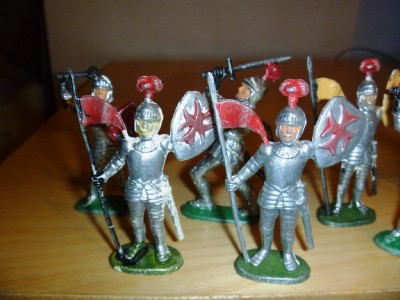

Mind you, bargain doesn't mean brisk and over the course of an hour, a fair number of heads pop through the window hatch, attached to customers who have been sitting in the two old-fashioned dining rooms wondering if their lunch has gotten lost.

When the dishes do come, though, they are borne by brisk and cheery young men, moving at a speed which implies the food is hot from the hob. In keeping with the bare floorboards and the simple flower arrangements on the tables, this is a place free of frills but with a friendly feel. And try saying that after three pints of London Pride

Shopping in Lewes is a pleasure, browse the antique shops of the Cliff, visit the Farmers market on the first Saturday every month pick up some delicious local fare. Pop into Bills for a cuppa or something more substantial from the mouth-watering menu. Have a pint of Harveys, the local brew, in one of the many friendly 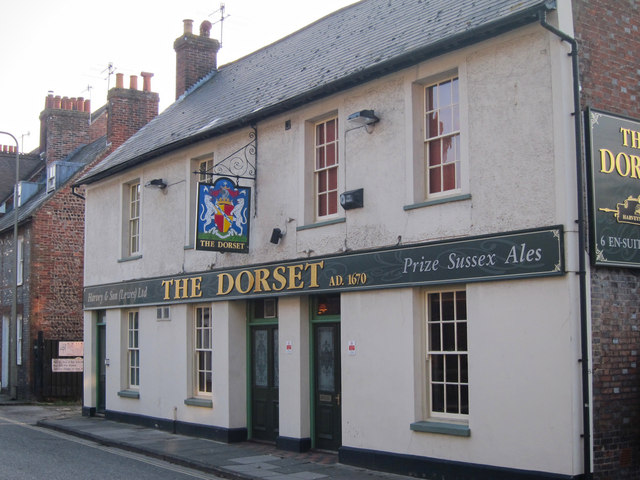 pub.This is where you will find Peter Cole some evenings the castle shop said
pub.This is where you will find Peter Cole some evenings the castle shop said
 pub.This is where you will find Peter Cole some evenings the castle shop said
pub.This is where you will find Peter Cole some evenings the castle shop said
Simon de Montfort, 6th Earl of Leicester, had gained a dominant position in the government  of the Kingdom of Englandafter his victory at the Battle of Lewes a year earlier.
of the Kingdom of Englandafter his victory at the Battle of Lewes a year earlier. He also held the King, Prince Edward, and the King's brother
He also held the King, Prince Edward, and the King's brother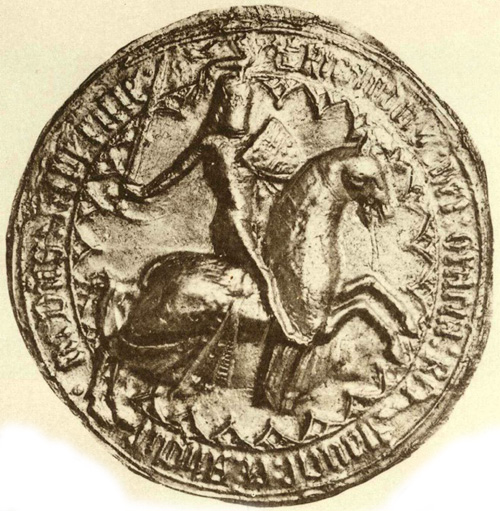 Richard of Cornwall in his custody. However, his sphere of influence rapidly began to deteriorate due to loss of key allies. In February, Robert de Ferrers, Earl of Derby
Richard of Cornwall in his custody. However, his sphere of influence rapidly began to deteriorate due to loss of key allies. In February, Robert de Ferrers, Earl of Derby was arrested and imprisoned in the Tower.An
was arrested and imprisoned in the Tower.An even more important collaborator, Gilbert de Clare, the Earl of Gloucester, deserted to the
even more important collaborator, Gilbert de Clare, the Earl of Gloucester, deserted to the side of the King in May of the same year.In April 1264, Gilbert de Clare led the massacre of
side of the King in May of the same year.In April 1264, Gilbert de Clare led the massacre of  the Jews at Canterbury,In April 1264, Gilbert de Clare led the massacre of the Jews at
the Jews at Canterbury,In April 1264, Gilbert de Clare led the massacre of the Jews at  Canterbury, as Simon de Montfort had done in Leicester. In 1189 the Archbishop of
Canterbury, as Simon de Montfort had done in Leicester. In 1189 the Archbishop of  Canterbury recommended that Jews should not attend Richard I’s coronation at Westminster for fear of witchcraft. When they were sighted bringing presents to the new King a riot
Canterbury recommended that Jews should not attend Richard I’s coronation at Westminster for fear of witchcraft. When they were sighted bringing presents to the new King a riot  This historic town centre pub situated on the Meridian line was probably the first pub in the UK to welcome the new Millenium. Real ales are Shepherd Neame Best, Spitfire, Master Brew and Seasonal Ales. Traditional home cooked pub food prepared by Sylve-it's the kind of food that tastes just like your Grandma used to cook! It's served 12-230 daily. There is a large screen TV with Sky sports coverage. Karaoke on Friday evening and disco on Saturday evening.
This historic town centre pub situated on the Meridian line was probably the first pub in the UK to welcome the new Millenium. Real ales are Shepherd Neame Best, Spitfire, Master Brew and Seasonal Ales. Traditional home cooked pub food prepared by Sylve-it's the kind of food that tastes just like your Grandma used to cook! It's served 12-230 daily. There is a large screen TV with Sky sports coverage. Karaoke on Friday evening and disco on Saturday evening.
Open: 1130-3 530-11 M-W 1130-11 Th-Sa He also held the King, Prince Edward, and the King's brother
He also held the King, Prince Edward, and the King's brother Richard of Cornwall in his custody. However, his sphere of influence rapidly began to deteriorate due to loss of key allies. In February, Robert de Ferrers, Earl of Derby
Richard of Cornwall in his custody. However, his sphere of influence rapidly began to deteriorate due to loss of key allies. In February, Robert de Ferrers, Earl of Derby was arrested and imprisoned in the Tower.An
was arrested and imprisoned in the Tower.An even more important collaborator, Gilbert de Clare, the Earl of Gloucester, deserted to the
even more important collaborator, Gilbert de Clare, the Earl of Gloucester, deserted to the side of the King in May of the same year.In April 1264, Gilbert de Clare led the massacre of
side of the King in May of the same year.In April 1264, Gilbert de Clare led the massacre of  the Jews at Canterbury,In April 1264, Gilbert de Clare led the massacre of the Jews at
the Jews at Canterbury,In April 1264, Gilbert de Clare led the massacre of the Jews at  Canterbury, as Simon de Montfort had done in Leicester. In 1189 the Archbishop of
Canterbury, as Simon de Montfort had done in Leicester. In 1189 the Archbishop of  Canterbury recommended that Jews should not attend Richard I’s coronation at Westminster for fear of witchcraft. When they were sighted bringing presents to the new King a riot
Canterbury recommended that Jews should not attend Richard I’s coronation at Westminster for fear of witchcraft. When they were sighted bringing presents to the new King a riot  This historic town centre pub situated on the Meridian line was probably the first pub in the UK to welcome the new Millenium. Real ales are Shepherd Neame Best, Spitfire, Master Brew and Seasonal Ales. Traditional home cooked pub food prepared by Sylve-it's the kind of food that tastes just like your Grandma used to cook! It's served 12-230 daily. There is a large screen TV with Sky sports coverage. Karaoke on Friday evening and disco on Saturday evening.
This historic town centre pub situated on the Meridian line was probably the first pub in the UK to welcome the new Millenium. Real ales are Shepherd Neame Best, Spitfire, Master Brew and Seasonal Ales. Traditional home cooked pub food prepared by Sylve-it's the kind of food that tastes just like your Grandma used to cook! It's served 12-230 daily. There is a large screen TV with Sky sports coverage. Karaoke on Friday evening and disco on Saturday evening.
ensued during which some were murdered, one forcibly baptized and their London homes  looted and burned. The following year a mob led by barons, clergymen and soldiers recruited for the Third Crusade massacred most of the Jewish population of York. Similar pogroms
looted and burned. The following year a mob led by barons, clergymen and soldiers recruited for the Third Crusade massacred most of the Jewish population of York. Similar pogroms 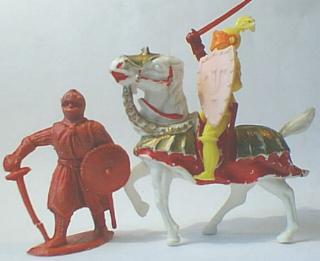 were perpetrated at Lincoln, Dunstable, Colchester, Lynn, Stamford, Thetford, Ospringe and Bury St. Edmunds – from where, at the abbot’s instigation, Jews were expelled. Afterwards there were expulsions from Leicester in 1231, Newcastle in 1234, Wycombe in 1235,
were perpetrated at Lincoln, Dunstable, Colchester, Lynn, Stamford, Thetford, Ospringe and Bury St. Edmunds – from where, at the abbot’s instigation, Jews were expelled. Afterwards there were expulsions from Leicester in 1231, Newcastle in 1234, Wycombe in 1235,  Southampton in 1236, Berkhamsted in 1242, Newbury in 1244, Derby in 1263 and Marlborough, Gloucester, Worcester and Cambridge in 1275. Added to this was the
Southampton in 1236, Berkhamsted in 1242, Newbury in 1244, Derby in 1263 and Marlborough, Gloucester, Worcester and Cambridge in 1275. Added to this was the  imposition by the Fourth Lateran Council of 1215 of distinctive clothing on Jews; a piece of saffron-coloured fabric in the shape of the two tables of the law. Though initially not widely
imposition by the Fourth Lateran Council of 1215 of distinctive clothing on Jews; a piece of saffron-coloured fabric in the shape of the two tables of the law. Though initially not widely  observed this regulation must be seen in the context of increasingly aggressive preaching by Dominicans and Franciscans; the foundation in 1232 of a House for Jewish Converts (Domus
observed this regulation must be seen in the context of increasingly aggressive preaching by Dominicans and Franciscans; the foundation in 1232 of a House for Jewish Converts (Domus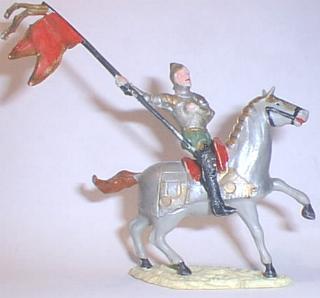 Conversorum); and severe anti-Jewish legislation proclaimed in 1253 and renewed with the
Conversorum); and severe anti-Jewish legislation proclaimed in 1253 and renewed with the  Statute of de Judaismo in 1275. Furthermore, during the Baron’s Wars of 1263–67 Simon de Montfort’s supporters killed Jews and destroyed their properties in London, Canterbury
Statute of de Judaismo in 1275. Furthermore, during the Baron’s Wars of 1263–67 Simon de Montfort’s supporters killed Jews and destroyed their properties in London, Canterbury , Worcester, Ely and Northampton. Rumours even circulated that Jewish women accepted baptism to save themselves. According to contemporary accounts in 1278–79 Edward I had about 290 Jews indicted, convicted and executed in London for coin clipping. Equally horrific were accusations of ritual murder, notably following the disappearance of William of Norwich just before Easter 1144. Similar charges were made at Gloucester (1168), Bury St. Edmunds (1181), Winchester (1192, 1225, 1232), Norwich (1230), London (1244) and Northampton (1279). But the most famous case was the alleged crucifixion of Hugh of Lincoln in 1255, which resulted in the execution of nineteen Jews.
, Worcester, Ely and Northampton. Rumours even circulated that Jewish women accepted baptism to save themselves. According to contemporary accounts in 1278–79 Edward I had about 290 Jews indicted, convicted and executed in London for coin clipping. Equally horrific were accusations of ritual murder, notably following the disappearance of William of Norwich just before Easter 1144. Similar charges were made at Gloucester (1168), Bury St. Edmunds (1181), Winchester (1192, 1225, 1232), Norwich (1230), London (1244) and Northampton (1279). But the most famous case was the alleged crucifixion of Hugh of Lincoln in 1255, which resulted in the execution of nineteen Jews.
 looted and burned. The following year a mob led by barons, clergymen and soldiers recruited for the Third Crusade massacred most of the Jewish population of York. Similar pogroms
looted and burned. The following year a mob led by barons, clergymen and soldiers recruited for the Third Crusade massacred most of the Jewish population of York. Similar pogroms  Southampton in 1236, Berkhamsted in 1242, Newbury in 1244, Derby in 1263 and Marlborough, Gloucester, Worcester and Cambridge in 1275. Added to this was the
Southampton in 1236, Berkhamsted in 1242, Newbury in 1244, Derby in 1263 and Marlborough, Gloucester, Worcester and Cambridge in 1275. Added to this was the  imposition by the Fourth Lateran Council of 1215 of distinctive clothing on Jews; a piece of saffron-coloured fabric in the shape of the two tables of the law. Though initially not widely
imposition by the Fourth Lateran Council of 1215 of distinctive clothing on Jews; a piece of saffron-coloured fabric in the shape of the two tables of the law. Though initially not widely  observed this regulation must be seen in the context of increasingly aggressive preaching by Dominicans and Franciscans; the foundation in 1232 of a House for Jewish Converts (Domus
observed this regulation must be seen in the context of increasingly aggressive preaching by Dominicans and Franciscans; the foundation in 1232 of a House for Jewish Converts (Domus Statute of de Judaismo in 1275. Furthermore, during the Baron’s Wars of 1263–67 Simon de Montfort’s supporters killed Jews and destroyed their properties in London, Canterbury
Statute of de Judaismo in 1275. Furthermore, during the Baron’s Wars of 1263–67 Simon de Montfort’s supporters killed Jews and destroyed their properties in London, Canterbury , Worcester, Ely and Northampton. Rumours even circulated that Jewish women accepted baptism to save themselves. According to contemporary accounts in 1278–79 Edward I had about 290 Jews indicted, convicted and executed in London for coin clipping. Equally horrific were accusations of ritual murder, notably following the disappearance of William of Norwich just before Easter 1144. Similar charges were made at Gloucester (1168), Bury St. Edmunds (1181), Winchester (1192, 1225, 1232), Norwich (1230), London (1244) and Northampton (1279). But the most famous case was the alleged crucifixion of Hugh of Lincoln in 1255, which resulted in the execution of nineteen Jews.
, Worcester, Ely and Northampton. Rumours even circulated that Jewish women accepted baptism to save themselves. According to contemporary accounts in 1278–79 Edward I had about 290 Jews indicted, convicted and executed in London for coin clipping. Equally horrific were accusations of ritual murder, notably following the disappearance of William of Norwich just before Easter 1144. Similar charges were made at Gloucester (1168), Bury St. Edmunds (1181), Winchester (1192, 1225, 1232), Norwich (1230), London (1244) and Northampton (1279). But the most famous case was the alleged crucifixion of Hugh of Lincoln in 1255, which resulted in the execution of nineteen Jews.
Several reasons have been suggested for why Edward I expelled Jews from England in 1290. Observers variously attributed it to the influence of the Queen Mother, baronial complaints in Parliament and advice from the King’s council. Among modern historians the traditional view was that the Crown benefited financially: since Jews were legally the King’s property debts due to them became payable to him. Yet the contrary has also been maintained: once Jews were barred from usury in 1275 their wealth declined and consequently they became less useful to the Crown as a source of revenue through taxation. This argument is supported by the growing importance of foreign financiers, above all Lombards, Cahorsins and Gascons, upon whom Edward I became increasingly dependent for borrowing money. Nonetheless, it must be noted that after 1275 Jews – particularly in Norwich, Lincoln and Canterbury – were still engaged in usury disguised as trading in grain and wool. Indeed, some scholars think the practice was so widespread that Edward’s response was to force out Jews from his realm. Moreover, there is a European dimension to consider: King Philip Augustus of France had driven Jews from his lands in 1182 (only to readmit them in 1198), while Edward himself had expelled Jews from Gascony in 1287. Precedents had been set, but monarchs do not live forever.Here the brilliant peter cole of Replicants.
Moreover, there is a European dimension to consider: King Philip Augustus of France had driven Jews from his lands in 1182 (only to readmit them in 1198), while Edward himself had expelled Jews from Gascony in 1287. Precedents had been set, but monarchs do not live forever.Here the brilliant peter cole of Replicants.
 Moreover, there is a European dimension to consider: King Philip Augustus of France had driven Jews from his lands in 1182 (only to readmit them in 1198), while Edward himself had expelled Jews from Gascony in 1287. Precedents had been set, but monarchs do not live forever.Here the brilliant peter cole of Replicants.
Moreover, there is a European dimension to consider: King Philip Augustus of France had driven Jews from his lands in 1182 (only to readmit them in 1198), while Edward himself had expelled Jews from Gascony in 1287. Precedents had been set, but monarchs do not live forever.Here the brilliant peter cole of Replicants.
as Simon de Montfort had done in Leicester.

Jews have lived in York since 1170. They felt that they could use York castle for protection and felt secure among York’s elite residents, who used enjoyed Jewish financial services. The situation worsened in July 1189 when King Henry II, a protector of the Jews, died. Richard I was crowned his heir and he refused to grant Jewish representative admission to Westminster Abbey, when they came to offer him gifts. Riots were started and mobs threw stones at the Jews and burned the straw roofs of their houses. Many Jews were murdered, some allowed themselves to be baptized. Twenty-four hours later, Richard I found out about the riots and ordered that the Jews be protected.

As soon as Richard I left to join the Crusade in 1190, riots began again throughout England. In March 1190, a mix of Crusaders, barons indebted to the Jews, those envious of Jewish wealth and clergymen conspired to kill the Jews of York. They burned several houses and approximately 150 Jews fled to the royal castle in York. Led by Richard Malebys, a noble indebted to the Jews, the mob besieged the castle. The Jews had little rations and many killed themselves. On March 16, the citadel was captured and those Jews left alive were murdered. The mob then stole the records of debts to Jews from a nearby cathedral and burned them
.

When Richard I returned to England, he was angry at the loss of his chief financial source. He introduced a system of registering in duplicate all debts held by the Jews to safeguard all the taxes he received from them. In 1194, he established the Exchequer of the Jews, a catalogue of all Jewish holdings in England. The Crown could then arbitrarily collect taxes on Jewish revenue. The Jews were forced to respond to this exploitation by charging higher interest rates, thereby increasing their unpopularity with Christian borrowers. Richards successors continued to tax the Jews in every way possible. Payment was forced through imprisonment, property confiscation, torture, and the kidnaping of women and children.

Gilbert de Clare’s castles of Kingston and Tonbridge  were taken by the King, Henry III. However, the King allowed de Clare's Countess Alice de Lusignan, who was in the latter, to go free because she was his niece; but on 12 May de Clare
were taken by the King, Henry III. However, the King allowed de Clare's Countess Alice de Lusignan, who was in the latter, to go free because she was his niece; but on 12 May de Clare  and de Montfort were denounced as traitors. With Gloucester's assistance, Prince Edward escaped from Montfort's captivity.
and de Montfort were denounced as traitors. With Gloucester's assistance, Prince Edward escaped from Montfort's captivity.
 were taken by the King, Henry III. However, the King allowed de Clare's Countess Alice de Lusignan, who was in the latter, to go free because she was his niece; but on 12 May de Clare
were taken by the King, Henry III. However, the King allowed de Clare's Countess Alice de Lusignan, who was in the latter, to go free because she was his niece; but on 12 May de Clare  and de Montfort were denounced as traitors. With Gloucester's assistance, Prince Edward escaped from Montfort's captivity.
and de Montfort were denounced as traitors. With Gloucester's assistance, Prince Edward escaped from Montfort's captivity.
With the Lords of the Welsh Marches in rebellion, Montfort solicited the aid of Llywelyn ap Gruffyd, the Prince of Wales. Llywelyn agreed to help, in return for full recognition of his title, and the promise that he could keep all military gains. Whatever benefits this alliance might have brought Montfort, the great concessions cost him popularity at home. Meanwhile Edward laid siege to the town of Gloucester,
Llywelyn agreed to help, in return for full recognition of his title, and the promise that he could keep all military gains. Whatever benefits this alliance might have brought Montfort, the great concessions cost him popularity at home. Meanwhile Edward laid siege to the town of Gloucester, 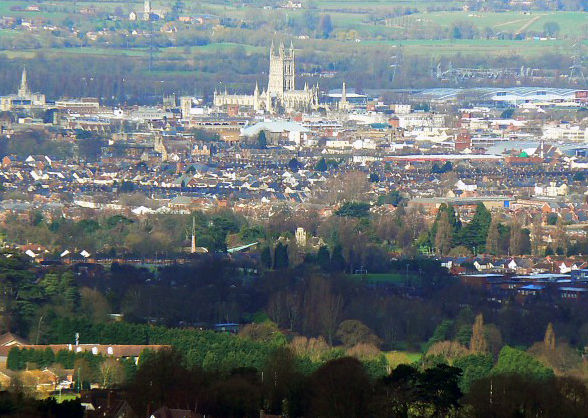 which fell on 29 June. Montfort's goal now became to unite with the forces of his son Simon,
which fell on 29 June. Montfort's goal now became to unite with the forces of his son Simon, and engage with the royal army, but the younger Simon moved much too slowly westwards from London. Eventually Simon made it to the baronial stronghold of
and engage with the royal army, but the younger Simon moved much too slowly westwards from London. Eventually Simon made it to the baronial stronghold of  Kenilworth, but Edward managed to inflict great losses on the enemy, many of whom were quartered outside the castle walls. From there the Prince moved south, where, on 4 August, he managed to trap the older Montfort in a loop of the Avon,
Kenilworth, but Edward managed to inflict great losses on the enemy, many of whom were quartered outside the castle walls. From there the Prince moved south, where, on 4 August, he managed to trap the older Montfort in a loop of the Avon, 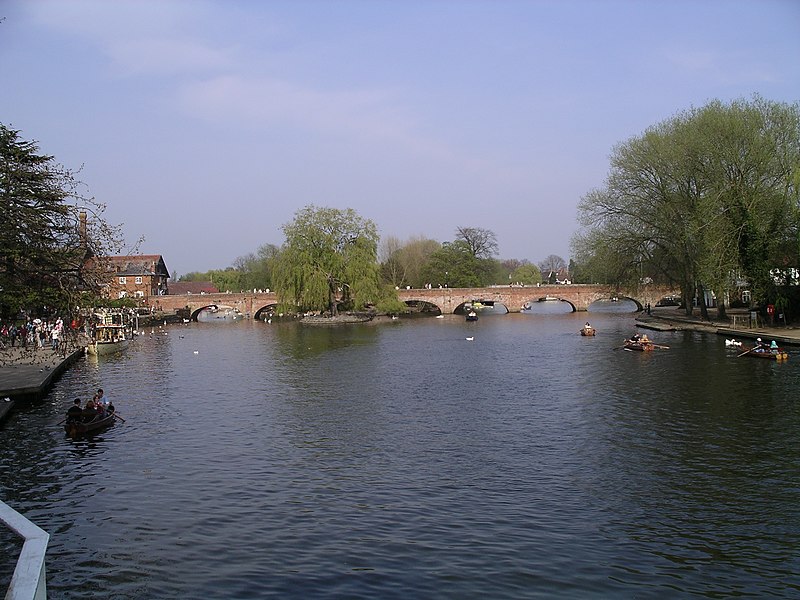 blocking off the only bridge and thereby forcing Montfort to fight without his son's reinforcements. When Montfort realized this, he allegedly commented: "May the Lord have mercy upon our souls, as our bodies are theirs."
blocking off the only bridge and thereby forcing Montfort to fight without his son's reinforcements. When Montfort realized this, he allegedly commented: "May the Lord have mercy upon our souls, as our bodies are theirs."
 Llywelyn agreed to help, in return for full recognition of his title, and the promise that he could keep all military gains. Whatever benefits this alliance might have brought Montfort, the great concessions cost him popularity at home. Meanwhile Edward laid siege to the town of Gloucester,
Llywelyn agreed to help, in return for full recognition of his title, and the promise that he could keep all military gains. Whatever benefits this alliance might have brought Montfort, the great concessions cost him popularity at home. Meanwhile Edward laid siege to the town of Gloucester,  which fell on 29 June. Montfort's goal now became to unite with the forces of his son Simon,
which fell on 29 June. Montfort's goal now became to unite with the forces of his son Simon, and engage with the royal army, but the younger Simon moved much too slowly westwards from London. Eventually Simon made it to the baronial stronghold of
and engage with the royal army, but the younger Simon moved much too slowly westwards from London. Eventually Simon made it to the baronial stronghold of  Kenilworth, but Edward managed to inflict great losses on the enemy, many of whom were quartered outside the castle walls. From there the Prince moved south, where, on 4 August, he managed to trap the older Montfort in a loop of the Avon,
Kenilworth, but Edward managed to inflict great losses on the enemy, many of whom were quartered outside the castle walls. From there the Prince moved south, where, on 4 August, he managed to trap the older Montfort in a loop of the Avon,  blocking off the only bridge and thereby forcing Montfort to fight without his son's reinforcements. When Montfort realized this, he allegedly commented: "May the Lord have mercy upon our souls, as our bodies are theirs."
blocking off the only bridge and thereby forcing Montfort to fight without his son's reinforcements. When Montfort realized this, he allegedly commented: "May the Lord have mercy upon our souls, as our bodies are theirs."
Could there not have a more appropriate figure adorning the foyer of County Hall of leicester than Simon de Montfort?
"Despite his obvious achievements in other fields, this man was a noted anti-Semite who rid the city of Leicester of its Jewish community.
"Is this really someone who should be represented here?
"Is this really a welcoming image to any Jewish visitor or member of staff at Leicestershire County Council?"
De Montfort's influence is reflected in numerous buildings throughout the city, not least in the name of Leicester's main concert hall and a university.
However, he is also remembered for an edict of 1231 which banished Jews from the city – some 20 years before a general expulsion across the country.
As a result of his actions, there was no Jewish community in the city until the middle of the 19th century.
De Montfort's charter asked landlords to turn away Jewish people, and said: "No Jew or Jewess in my time, or in the time of any of my heirs to the end of the world, shall inhabit or remain or obtain a residence in Leicester."
A spokeswoman for the county council said the earl's life was tied to Leicestershire's history, even though some of his behaviour was seen as unacceptable now.
She said the statue would be staying.
She said: "I do not suppose that he is unique in the context of historical figures with flawed . _personalities whose personal conduct and attitudes would not be tolerated by today's society.
"The arms of the county of Leicestershire incorporate the arms of three former Earls of Leicester. Isn-t that same blindingly stupid argument the same for Adolf hitler I ask. But there you go the idiots we have in councils are either bent or stupid, not all but a great many. The bent question should be asked of Islington council and how the Emirates was built, didn-t anyone realise the backhanders given out to council councillors, I know because I know one.
No comments:
Post a Comment